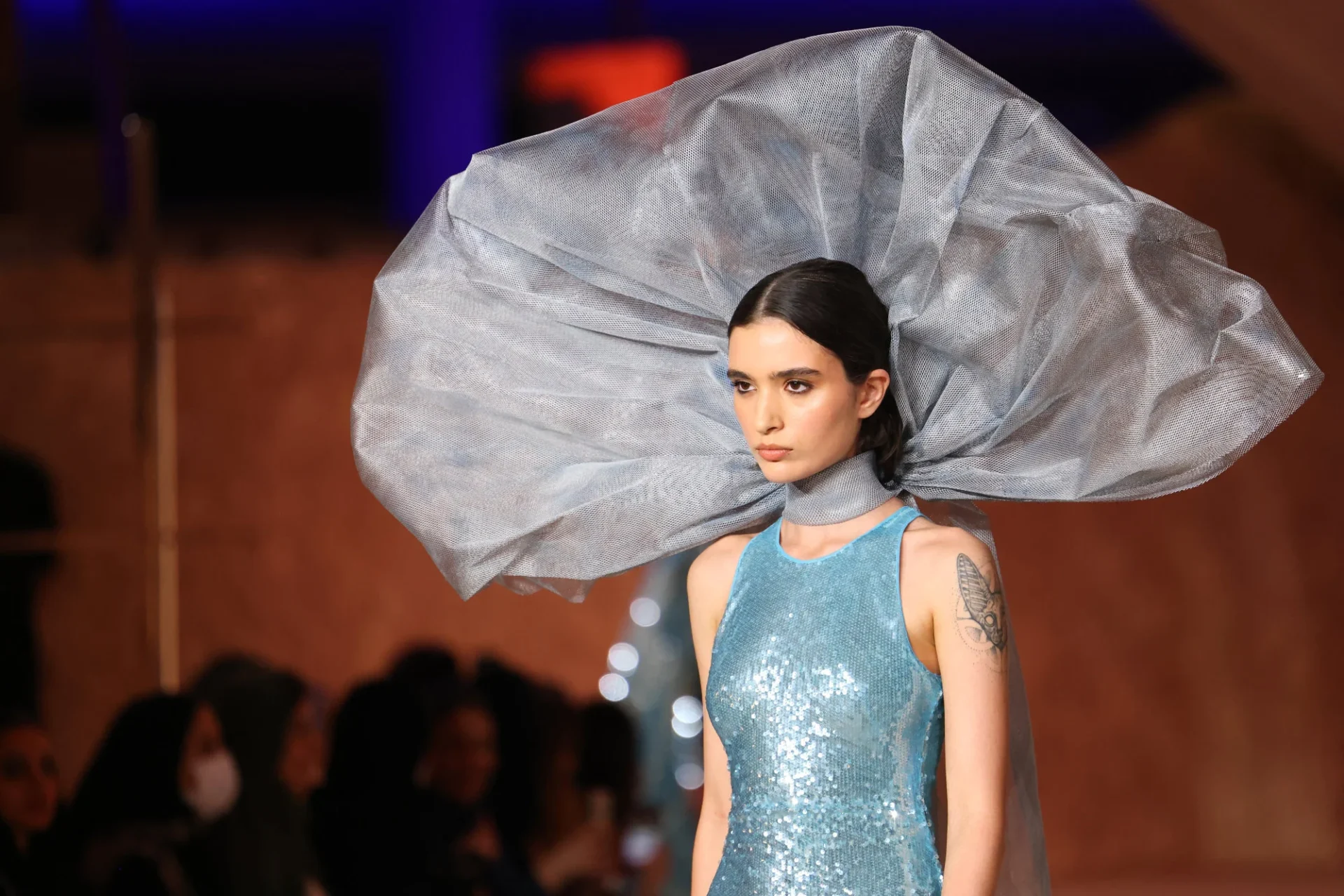The recent Riyadh Fashion Week in Saudi Arabia marked a historic moment in the country’s fashion industry, showcasing a significant departure from the past and aligning with broader societal changes. Adnan Akbar, a renowned couturier whose past clients include Princess Diana and two French first ladies, was a prominent figure at the event. This was a landmark show for Akbar, as it was his first major fashion event in his native land, despite a celebrated international career.
Adnan Akbar’s participation alongside his son, Abdullah Akbar, in the fashion week, represents a major shift in a country where fashion shows were once confined to private gatherings or women-only events. Models graced the runway in Akbar’s stunning creations, signaling a new era in the Saudi fashion world.
Saudi Arabia’s fashion industry, though still in its infancy, shows significant potential for growth. According to a report by the Saudi Fashion Commission, the sector accounted for US$12.5 billion or 1.4 percent of the national GDP last year and employed 230,000 people. This growth aligns with Crown Prince Mohammed bin Salman’s Vision 2030 reform agenda, aiming to diversify the economy beyond oil.
One of the key challenges facing the Saudi fashion industry is reducing its reliance on imports, as evidenced by the US$7.3 billion spent on imported fashion goods in 2021. Riyadh Fashion Week’s focus on local talent over international designers is a strategic move to bolster the domestic industry and showcase Saudi designers to the world.
The event featured not only veterans like Adnan Akbar and Mohammed Ashi, who has dressed global celebrities, but also emerging Saudi designers with less international exposure. This approach was deliberate, aiming to create curiosity and interest in designers relatively unknown outside Saudi Arabia.
The Saudi Fashion Commission’s initiatives, like the upcoming manufacturing space in Riyadh, aim to keep more of the brands’ value chains within the country. This move could transform fashion into a driving force for non-oil economic growth.
The lifting of abaya and hijab requirements for women, coupled with the push for female employment, has created new fashion demands. Designers like Mona Alshebil have responded by creating professional attire for women in high-profile jobs. The relaxation of social restrictions has also fueled the demand for diverse clothing, including streetwear, blending traditional Saudi elements with modern style.
Comparisons are being drawn between the ongoing transformation in Saudi Arabia’s fashion industry and the evolution witnessed in China two decades ago. With substantial investment and growing interest, Saudi Arabia’s fashion scene is poised for a remarkable transformation, potentially becoming a significant player in the global fashion industry.
READ MORE:
